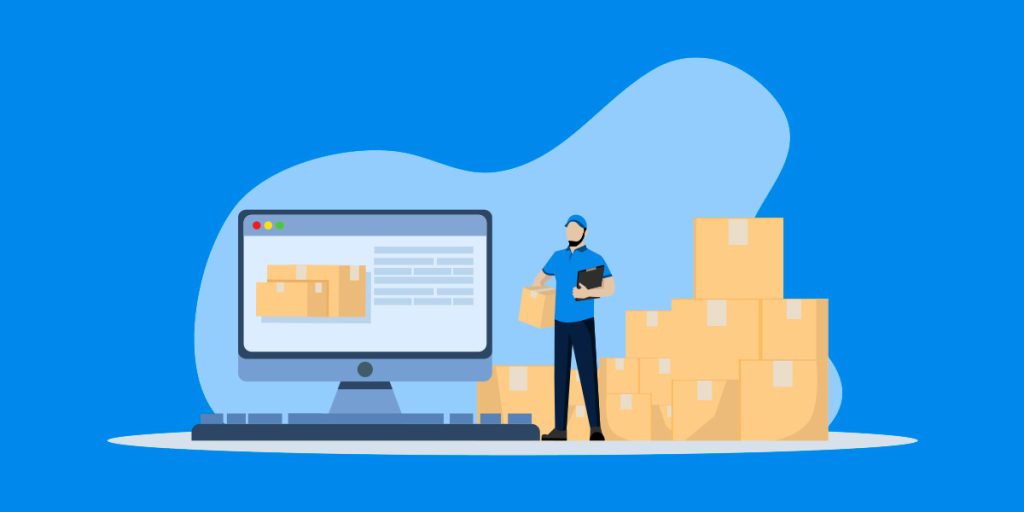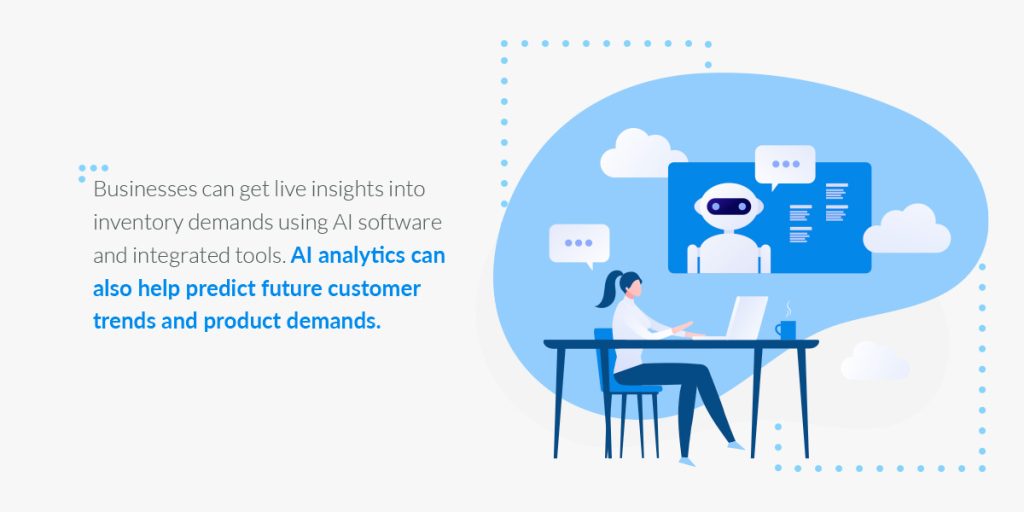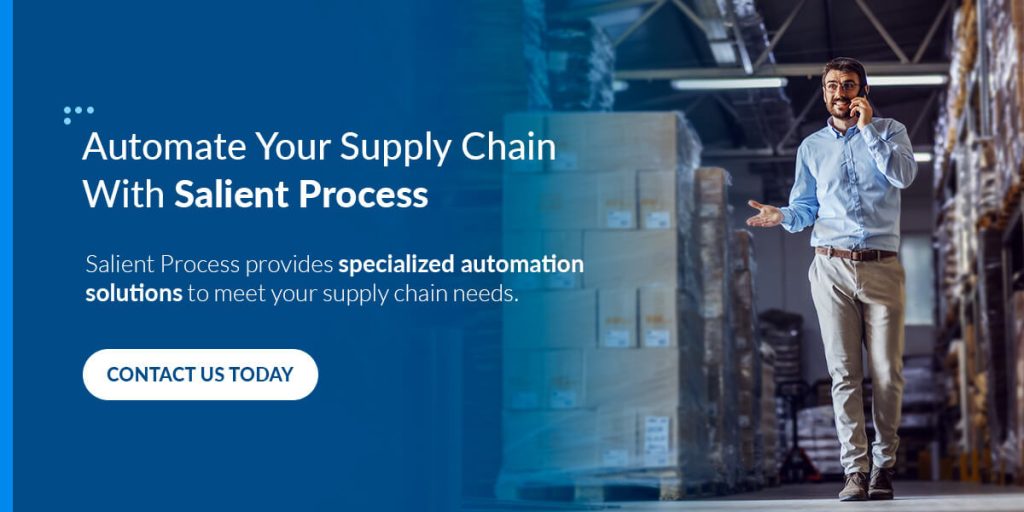
In today’s competitive business environment, efficiency is paramount to staying competitive and profitable. Slow and outdated processes can negatively impact customer experience and the revenue they bring to your business. Automating your supply chain enables more systematic operations to minimize human error, optimize your productivity and output, and improve client fulfillment.
Supply chain automation is computer-aided software like robotics and tools for improving process efficiency. It minimizes the need for direct human intervention, manual processes, and tasks, which can be time-consuming and costly. Supply chain automation can help businesses limit redundant processes, freeing up staff for more essential functions like customer relationship building and retention.
Components of supply chain automation include automated Inventory management, order processing and fulfillment automation, transport and supply chain automation, and automated vendor management. With various software and technology, businesses can automate these key components:
Whether in a warehouse or retail business, managing inventories can be a complex task. Staff must account for stock, pack items in accurate places, and ensure orders are available for customer purchase.
Manually completing these processes can be time-consuming and lead to human error. For example, suppose an employee inaccurately calculates stock or forgets to update inventory lists. In that case, the business might be unaware they do not have various items available for purchase, which can mislead consumers and impact their experience.
Automating inventory management involves using software to digitally track, update, and manage inventory in real-time, limiting human error. It can speed up processes, enhance cash flow, and improve customer satisfaction.
When consumers order or purchase items, they expect to receive the correct items on time or by the delivery date. Manually receiving and processing orders can lead to mistakes like capturing incorrect client details. This error can impact the entire process and delay the customer’s delivery. Additionally, manually picking and packing order items can be slow and lead to human error, like an employee packing incorrect items for a customer.
Automation software can help businesses streamline the order and fulfillment process, including advanced technology for locating and packing items and digital platforms for capturing customer details. These automation solutions can lead to more accurate, efficient, and reliable order fulfillment, resulting in correct, on-time deliveries and happier customers.
Automating transporting and logistics involves using digital tools and software to update customers on their delivery, track driver schedules, improve delivery times, and enhance accountability. For example, delivery drivers can use GPS software to locate delivery locations faster and more accurately. Logistics automation software can update clients on their delivery status and notify them of delivery times and delays.
When customers have better insight into delivery arrivals, they can plan accordingly, mitigating miscommunications and negative experiences. Another delivery automation tool is centralized planforms for communicating driver schedules to in-house teams, enabling faster and more accurate client updates and helping manage expectations.
Vendor management refers to automating third-party business relationships or partnerships. With various technologies, businesses can automate the procurement process, avoiding lengthy and inefficient processes.
For example, when selecting vendors, companies can use a central tool or system to vet them digitally. These platforms can help businesses match with suitable vendors more conveniently, limiting lengthy meetings and processes. Automated vendor management can include streamlining, vendor contract agreements, onboarding, performance tracking, and payment processes.
Investing in supply chain automation for your business can provide numerous benefits:
Automating tasks and operations can improve production speeds and delivery outcomes. When you automate specific workflow tasks, you can limit time-consuming and tedious work like manually capturing data. Additionally, you can free up staff for more critical operations and grow your business.
Automation software can track data, helping you gather insights on product performance and consolidating essential information and complex data into one report. You can measure your product performance and use these metrics to make informed business decisions.
Processes like capturing data can become mundane, especially when done daily. This repetition can lead to misinterpreted data and incorrect inputs like misspelled names and addresses. Employees can easily miss a field and leave out essential information, leading to unsatisfactory customer delivery. Automated platforms and systems populate data more accurately and quickly, eliminating human error and speeding up operations.
People value excellent customer service and will often return or stay loyal to a business that offers it. With an automated supply chain, you can speed up operations, enhance fulfillment accuracy, and reduce delays and errors, providing better customer delivery and services.
Automating processes can help you scale down on redundant tasks, eliminating the need for extra recruitment and helping you save money on overheads for other business expenses.
Various technologies come together to support comprehensive supply chain improvement.
Supply management can use IoT software and devices to track and record inventories, monitor stock, find items on shelves, and provide and share updates on product availability and conditioning. These devices and software work on wireless networks and help reduce paperwork and human error.

AI and ML can be essential in inventory monitoring and management. Businesses can get live insights into inventory demands using AI software and integrated tools. AI analytics can also help predict future customer trends and product demands, helping companies make more informed and profitable decisions.
Using robots for material handling in warehouses can help speed up packing and transporting. Robots and machines can also eliminate time-consuming packing and transporting tasks and enhance picking accuracy.
Process automation software digitizes and streamlines payments, onboarding, procurement, order processing, and delivery tasks in supply chains This software helps with decreasing manual tasks, enhancing operational efficiency and cash flow, and improving customer satisfaction.
Instead of capturing and reentering data into a digital spreadsheet, employees can use data entry automation software to scan and extract information from digitally uploaded documents, reducing time-consuming work and human error.
Salient Process provides specialized automation solutions to meet your supply chain needs. Whether you need to streamline your finances, data capture, or workflow processes, we can come in, automate your operations, and set you up for success. Through long-term and prosperous partnerships and advanced software solutions featuring AI and IoT, we can continually expand your automation capabilities, improving efficiency, cash flow, and customer delivery.
Contact us today to start reaping the benefits of automation.
